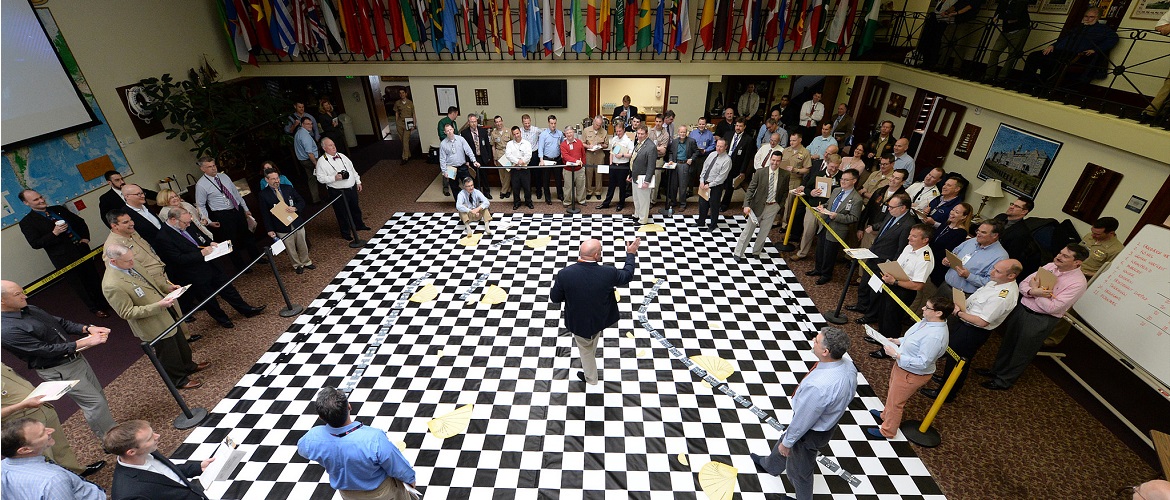
Wargaming
Simulating complex war situations—from sea to space to cyber—builds analytical, strategic, and decision-making skills. Wargaming programming not only enriches our curriculum, but it also helps shape defense plans and policies for various commands and agencies.
Simulations at sea—and beyond
Wargaming has been an integral part of Naval War College (NWC) since 1887. While the tools and technology used in simulations have evolved over the past century, the value of wargaming in maritime leadership development remains strong. Today, we conduct more than 50 gaming events per year, and they range in variety from complex, multi-sided computer-assisted games to simple, single-sided seminar games.
Wargaming supports our academic mission in many ways. Games foster an understanding of the decisions that military leaders and civilians make in maritime and joint warfare. Wargaming also opens discussion and debate of strategic and operational concepts. Finally, gaming provides insights and builds important risk assessment and analytical skills.
Wargaming Topics, Collaborations, and Partnerships
Wargaming allows students to gain practical experience and a better understanding of the dynamics of warfighting, but simulations are also designed to prepare military leaders for national disasters and humanitarian relief.
Wargaming Department
In support of Naval War College’s academic mission, the Wargaming Department conducts high-quality applied gaming, research, analysis, and education. Simulating these complex war scenarios builds analytical, decision-making, and risk assessment skills.
See Department